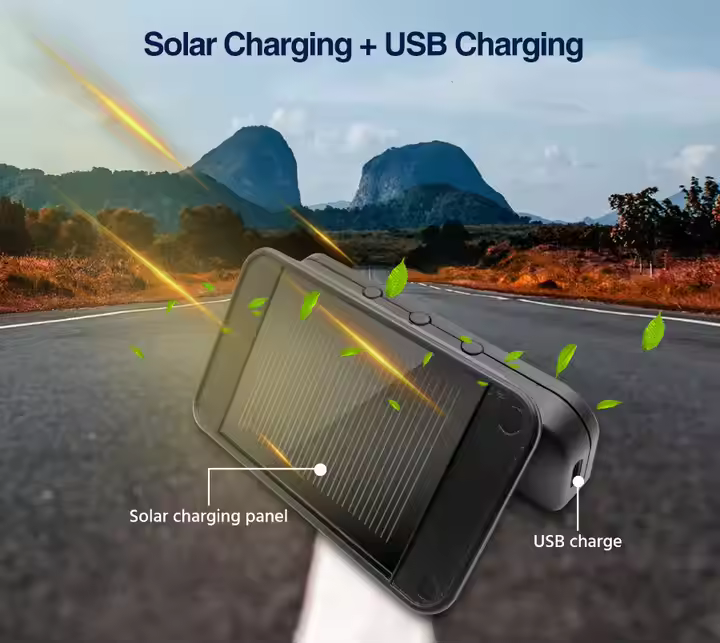TPMS/Car tire Pressure Monitoring System / Solar Power Internal TPMS
Product Highlights
- Real-time tire pressure and temperature monitoring.
- Solar-powered display for eco-friendly operation.
- Wireless sensors for easy installation and maintenance.
- User-friendly dashboard with clear readings.
- Enhanced safety by preventing tire blowouts.
- Improved fuel efficiency with accurate pressure updates.
- Durable and long-lasting performance with minimal upkeep.
Ratings & Reviews
💵 Cash on delivery available *
🚚 Free shipping on orders above 3000. Delivery Policy
7 Days Returns/Exchange ( Change of mind is not applicable )
No Warranty
Tires are one of the most critical components of a vehicle, and maintaining the right tire pressure ensures safety and efficiency on the road. This is where the Tire Pressure Monitoring System (TPMS) comes in. But what exactly is a TPMS, and why should every driver consider it essential?
What is TPMS?
A TPMS is a system that monitors the air pressure in your car’s tires. Its job is to alert you if the pressure falls below the recommended level. By doing this, it helps improve safety, save fuel, and extend the life of your tires.
Why is Proper Tire Pressure Important?
Driving with the wrong tire pressure can lead to dangerous situations, such as blowouts, reduced control, and uneven tire wear. It also affects fuel consumption and increases vehicle emissions. Proper tire pressure keeps you safe and saves you money.
Types of TPMS
Direct TPMS
This system uses sensors inside the tires to measure pressure directly. It provides accurate, real-time updates to the driver.
Indirect TPMS
Instead of measuring pressure directly, indirect TPMS uses wheel speed data to estimate tire pressure. While it’s less precise, it is simpler and more affordable.
Why Use a TPMS?
A TPMS offers multiple advantages for both drivers and the environment. Here’s how it helps:
1. Improved Safety
- Avoid Tire Blowouts: Sudden blowouts can cause accidents, but TPMS alerts you before the pressure reaches dangerous levels.
- Better Handling: Proper tire pressure ensures smoother control and improved grip, especially during sharp turns or sudden braking.
2. Save Fuel
Underinflated tires make your car work harder, increasing fuel consumption. With TPMS, you can maintain the right pressure and improve fuel efficiency.
3. Longer Tire Life
Tires with correct air pressure wear evenly, which means they last longer and need fewer replacements.
4. Environmentally Friendly
Efficient tire pressure reduces carbon emissions, making your driving more eco-friendly.
What is a Solar Power Internal TPMS?
A solar power internal TPMS is an innovative version of the traditional system. It combines the benefits of TPMS with renewable energy, offering an eco-friendly solution.
How Does It Work?
This system has solar panels to power its display unit. The sensors installed inside the tires send wireless signals to the dashboard unit, providing real-time updates on tire pressure.
Key Benefits
- Eco-Friendly: Solar panels reduce the need for batteries, cutting down waste and energy usage.
- Convenient: Unlike traditional TPMS, solar-powered versions are self-sufficient and require minimal maintenance.
Features of a Solar Power Internal TPMS
A solar-powered TPMS offers several features that make it stand out:
- Real-Time Monitoring: Provides instant updates on tire pressure and temperature.
- Wireless Technology: No wires mean a cleaner, more modern setup.
- Easy Installation: Most systems are user-friendly and don’t need professional installation.
- User-Friendly Display: The dashboard display is clear and easy to understand.
How to Install a Solar Power TPMS
Installing a solar-powered TPMS is straightforward. Follow these steps:
- Place the sensors inside each tire.
- Mount the solar-powered display unit on your dashboard.
- Pair the sensors with the display wirelessly.
- Test the system to ensure it’s working correctly.
Avoid Common Mistakes:
- Don’t skip sensor calibration.
- Ensure proper placement of the sensors.
- Double-check the pairing process.
Troubleshooting Common TPMS Issues
Here are some common problems you might encounter and how to resolve them:
Calibration Issues
The system may need recalibration to provide accurate readings. Follow the user manual for instructions.
Sensor Battery Problems
Although solar power charges the display, the internal sensors may still require occasional battery replacements.
Connectivity Problems
If the sensors lose connection with the display unit, check the range and ensure no interference between devices.
How to Choose the Right TPMS
Here’s what to consider when buying a TPMS for your vehicle:
1. Compatibility
Ensure the system is compatible with your car’s make and model.
2. Battery Life
Choose solar-powered systems for reduced battery-related concerns.
3. Accuracy
Pick a TPMS with reliable sensors that offer precise readings.
4. Price and Warranty
Look for a system that provides good value for money and includes a warranty for added peace of mind.
The Future of TPMS
As automotive technology advances, TPMS is also evolving.
1. Smart Car Integration
Future TPMS systems will integrate with smart cars, offering seamless operation and connectivity with other in-car systems.
2. Enhanced Features
Expect predictive maintenance and AI-powered analytics in upcoming TPMS models.
Conclusion
A Tire Pressure Monitoring System (TPMS) is essential for safe, efficient, and eco-friendly driving. Solar-powered TPMS takes it a step further by offering convenience, sustainability, and reliability. By maintaining proper tire pressure, you save money, protect the environment, and enjoy a smoother driving experience.
You can Find more Products.
No any specifiation for this product



















_1711015285.jpg)



